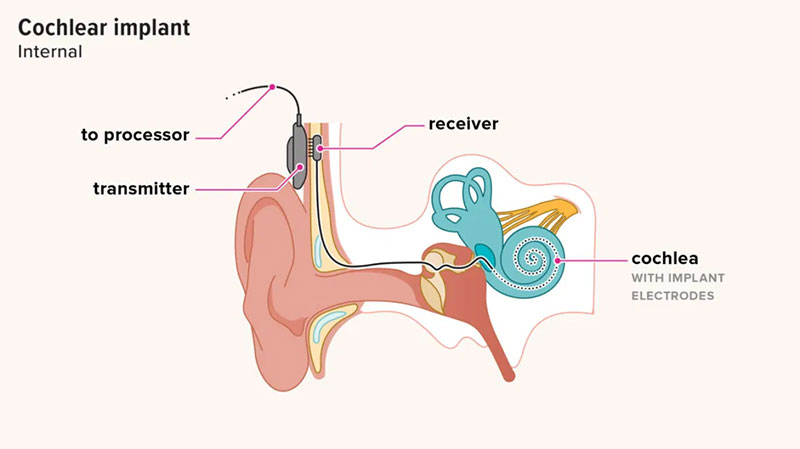What are cochlear implants and how do they work?
You might have seen videos online of people having their cochlear implants turned on and hearing for the first time, and if you haven’t, go watch them now!
So what are cochlear implants and how do they work? Are they just fancy hearing aids? If they’re so good, then why don’t all deaf people have them?
We’ll try and answer all these questions and more in this short article.
What is a cochlear implant?
A cochlear implant is used to help people with difficulty hearing, from babies to adults.
It’s a small electronic device that stimulates the cochlear nerve, telling the brain what to hear.
Not everyone is suitable for a cochlear implant – people are deaf for different reasons – and not everyone hard of hearing needs an implant – most people find hearing aids just as beneficial.
Different from hearing aids
Hearing aids make sounds louder, but cochlear implants work in a different way.
Hearing aids use a microphone, amplifier, and speaker to boost sounds, and they are also worn on the outside of the head, inside of behind the ear.
Cochlear implants are surgically implanted, with internal and external parts working together.
They don’t make sounds louder, instead bypassing the bones in the ear and sending signals directly to the brain.
How cochlear implants work
There are two parts to a cochlear implant, internal and external.
The external part looks like your average hearing aid. It sits behind the ear and has a microphone that picks up sound.
It then takes these sound waves and transforms them into digital signals, which are then sent to the receiver on the inside of your head.
The internal part is implanted just beneath the skin, also behind the ear so it sits in the same spot as the external part.
Once the receiver picks up the digital signals from the transmitter, it turns them into electrical pulses, stimulating the cochlear nerve.
Normally the cochlear nerve is stimulated by the vibrations from the tiny bones in the ear, but these may not work for whatever reason.
By bypassing these bones, signals are sent to the brain via the cochlear nerve and the result is a sense of hearing.
Pros and cons of a cochlear implant
It must be noted that stimulating the cochlear nerve via electronic pulses is very different than natural sound vibrations, and your brain can tell.
Sounds through an implant will never be as good as normal hearing, but they’re certainly better than no hearing at all!
Cochlear implants aren’t suitable for everyone, and only an audiologist and ENT surgeon can determine if the device is right for you and your unique condition.
If you are suitable for an implant, then they could vastly improve your quality of life.
With a cochlear implant you might be able to hear sounds you could never hear before like footsteps or birds singing. Lip readers may find they can comprehend without seeing someone’s mouth, and for babies and toddlers, a cochlear implant can help them to learn to talk.





Leave a Reply
Want to join the discussion?Feel free to contribute!